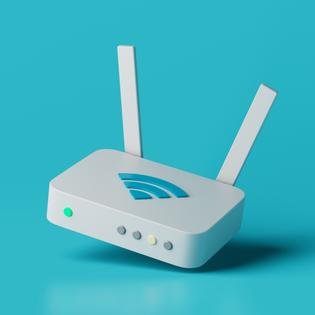Wi-Fi Setup
Seamless WiFi Setup Solutions for Uninterrupted Connectivity
Introduction:
In today’s digital age, a stable and reliable Wi-Fi connection is essential for both work and leisure. However, setting up Wi-Fi can sometimes be challenging, with issues ranging from driver-related problems to connectivity errors. This guide will walk you through the most common Wi-Fi setup issues and provide step-by-step solutions to ensure a seamless connection experience. Whether you’re dealing with a problematic Wi-Fi driver, difficulty detecting networks, or intermittent connections, we’ve got you covered. wifi setup
Wi-Fi Driver Not Installed or Outdated
One of the most common Wifi setup issues is an uninstalled or outdated Wi-Fi driver, which can cause your device to fail to connect to networks or experience frequent disconnections. Wi-Fi drivers enable your device’s hardware to communicate with the operating system, and without them, maintaining a stable connection becomes challenging.
Solution:
- Check Device Manager: Look under Network Adapters for any warning signs (e.g., a yellow triangle).
- Update Driver: Right-click the Wi-Fi adapter in Device Manager to update the driver, or download the latest version from the manufacturer’s website.
- Reinstall Driver: If updating doesn’t help, uninstall the driver, restart your computer, and let the system reinstall it automatically.
- Restart Device: After any driver changes, restart your device to ensure the new driver is properly loaded.
Regularly check for driver updates to prevent future issues.


Wi-Fi Network Not Detected
A common Wifi setup issue is when your device fails to detect any available networks. This problem can arise from interference, incorrect settings, or a disabled Wi-Fi adapter. It’s frustrating, especially when other devices are connecting fine.
Understanding Network Detection: When your device doesn’t detect networks, it’s often due to a malfunctioning Wi-Fi adapter, interference, or simple settings like airplane mode being on.
Solution:
- Check Wi-Fi Adapter Status: Ensure your Wi-Fi adapter is enabled in your device’s network settings.
- Disable Airplane Mode: Make sure airplane mode is off, as it disables all wireless communications.
- Reduce Interference: Move closer to the router and turn off devices like microwaves or cordless phones that might cause interference.
- Reset Network Settings: Resetting your network settings can refresh the connection but will erase saved networks.
- Check Router Settings: Ensure SSID broadcast is enabled in your router settings. If needed, change the broadcast channel to reduce interference.
Preventive Measures: Regularly update your router’s firmware and ensure correct Wi-Fi adapter and router configurations to maintain network stability and detection.

Intermittent Wi-Fi Connection
A stable Wi-Fi connection is crucial for uninterrupted browsing, streaming, and online work. However, experiencing frequent drops in your Wi-Fi connection can be incredibly disruptive. Intermittent connections can be caused by several factors, including signal interference, outdated router firmware, or misconfigured router settings. Understanding the underlying causes is key to resolving this Wi-Fi error.
Understanding Intermittent Connections:
Intermittent Wi-Fi connections often occur when there is significant interference between your device and the router. This interference could come from physical obstacles, such as walls or furniture, or from other electronic devices operating on the same frequency as your Wi-Fi. Additionally, outdated router firmware can cause stability issues, leading to frequent disconnections.
Solution:
- Update Router Firmware: Start by checking if your router’s firmware is up to date. Router manufacturers frequently release firmware updates that improve performance and security. Log in to your router’s web interface, check for any available updates, and install them if necessary.
- Change Wi-Fi Channel: Wi-Fi operates on different channels, and sometimes, interference from neighboring networks can cause connectivity issues. Access your router’s settings and change the Wi-Fi channel to one that’s less congested. Channels 1, 6, and 11 are generally recommended for 2.4 GHz networks, while 5 GHz networks have more available channels.
- Adjust Router Position: The position of your router can significantly impact the strength and stability of your Wi-Fi connection. Place your router in a central location, elevated if possible, to ensure even signal distribution throughout your home or office. Avoid placing the router near metal objects or appliances that can cause interference.
- Use a Wi-Fi Extender: If your home or office has multiple floors or thick walls, consider using a Wi-Fi extender to boost the signal in areas with poor coverage. This can help maintain a stable connection in areas far from the router.
- Check for Background Interference: Other wireless devices in your home, such as Bluetooth devices, baby monitors, or cordless phones, can interfere with your Wi-Fi signal. Try turning these devices off one by one to see if the connection improves.
Long-Term Stability Tips:
For long-term stability, regularly check your router’s settings and ensure it’s positioned optimally. If you continue to experience issues, consider upgrading to a dual-band router or a mesh Wi-Fi system, which can provide more consistent coverage and reduce interference.



